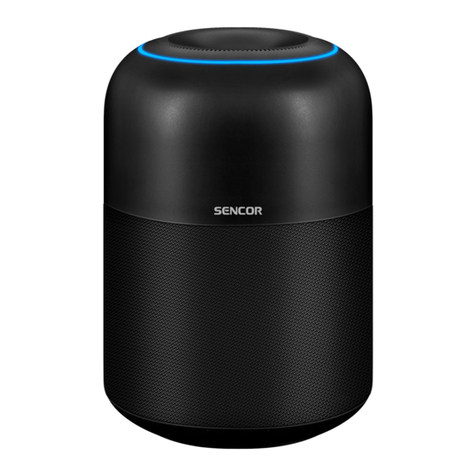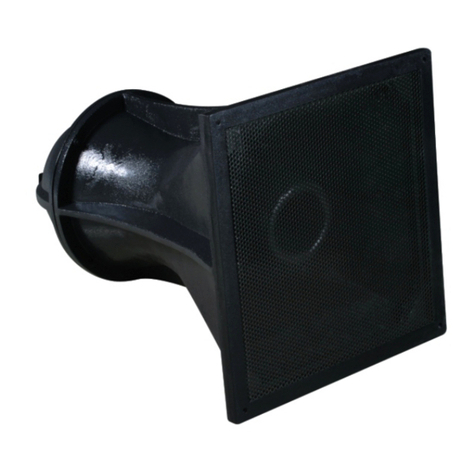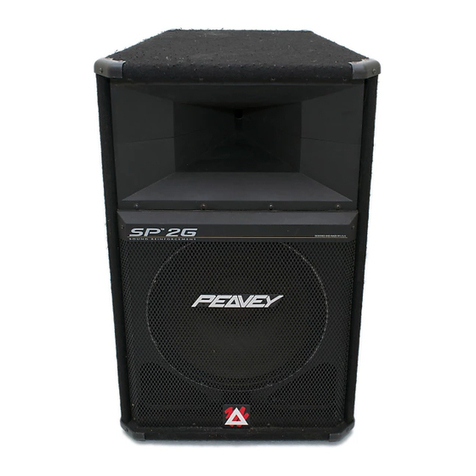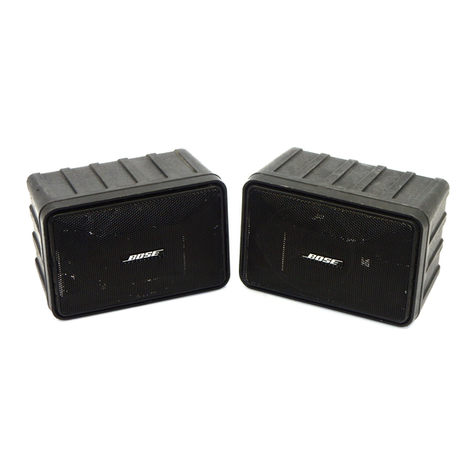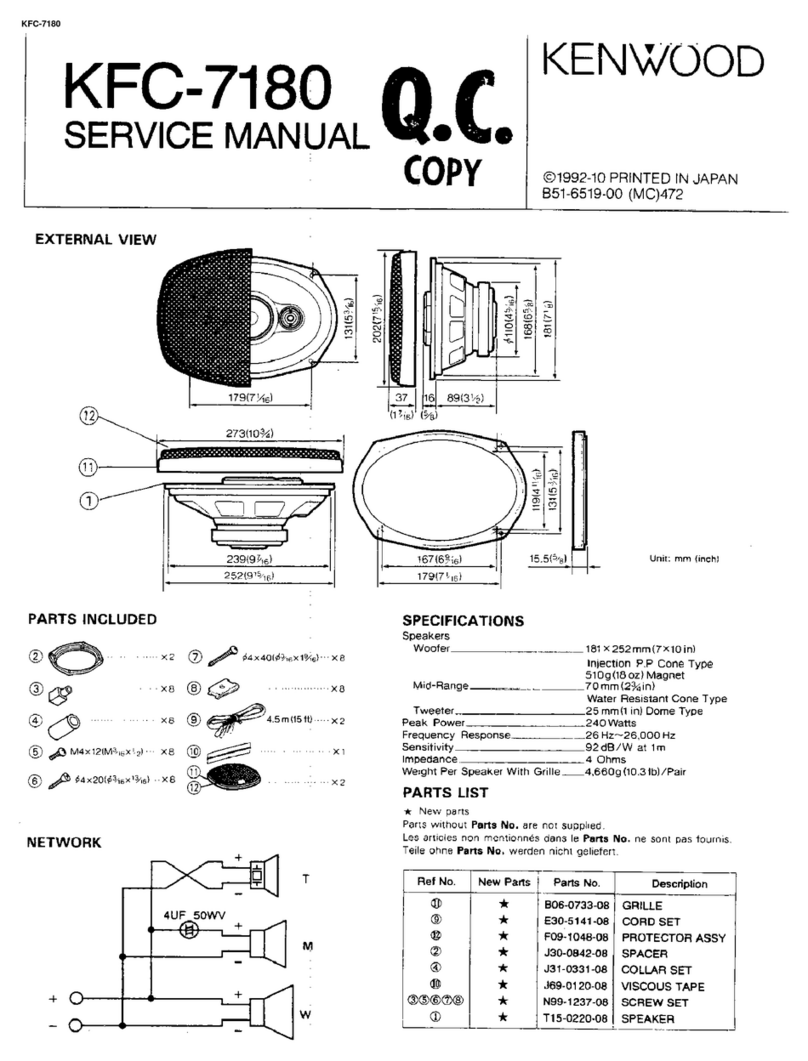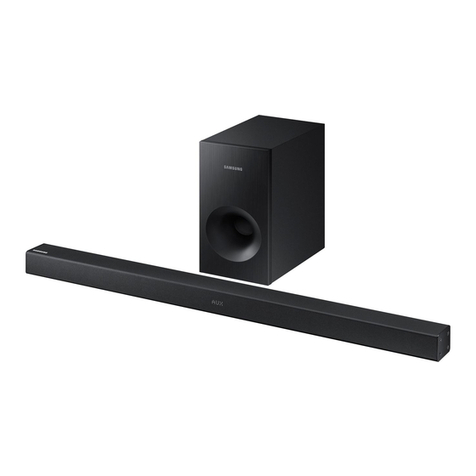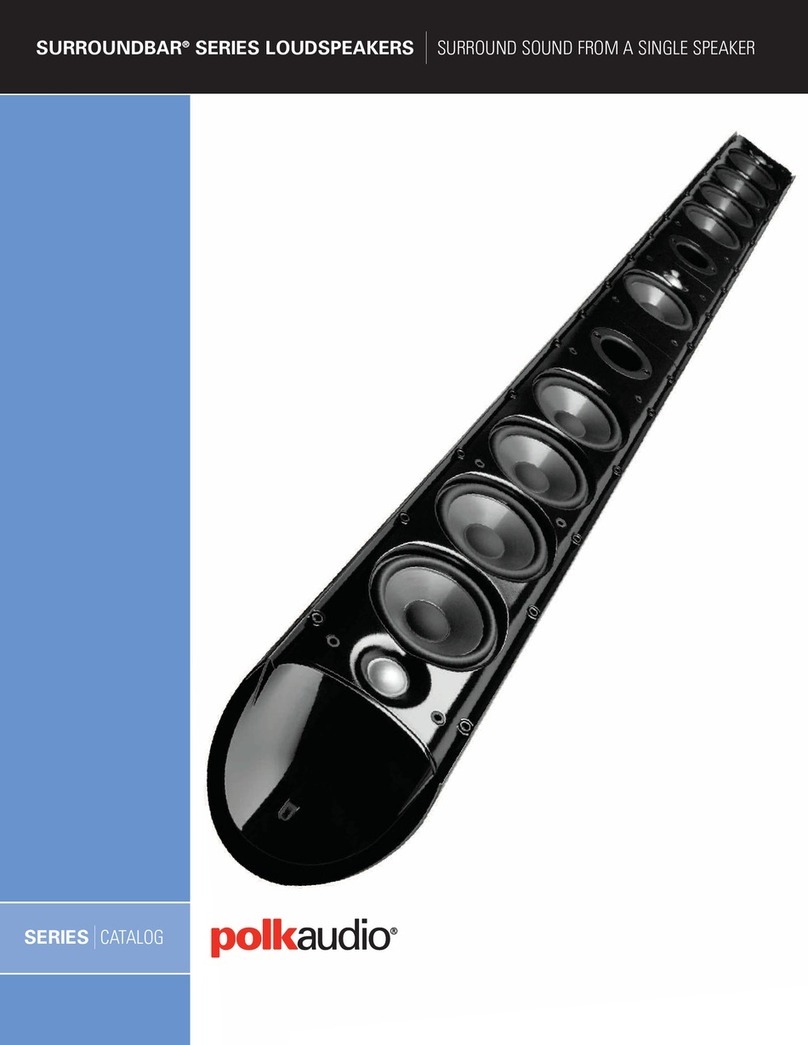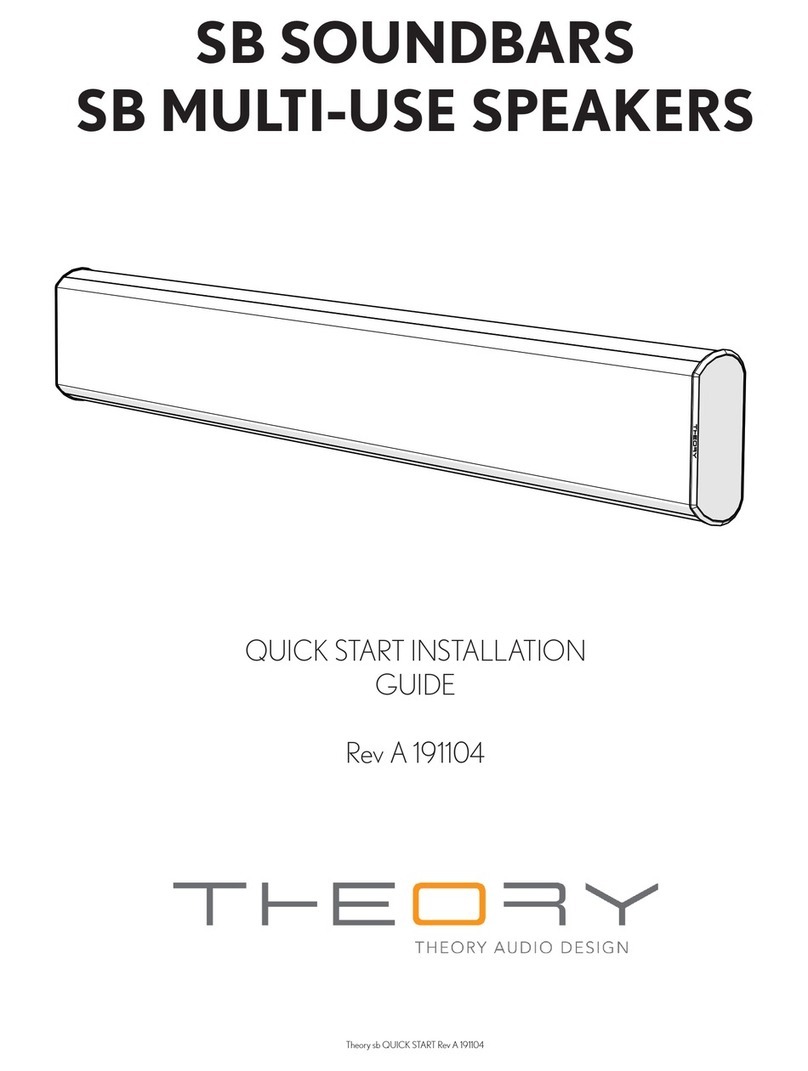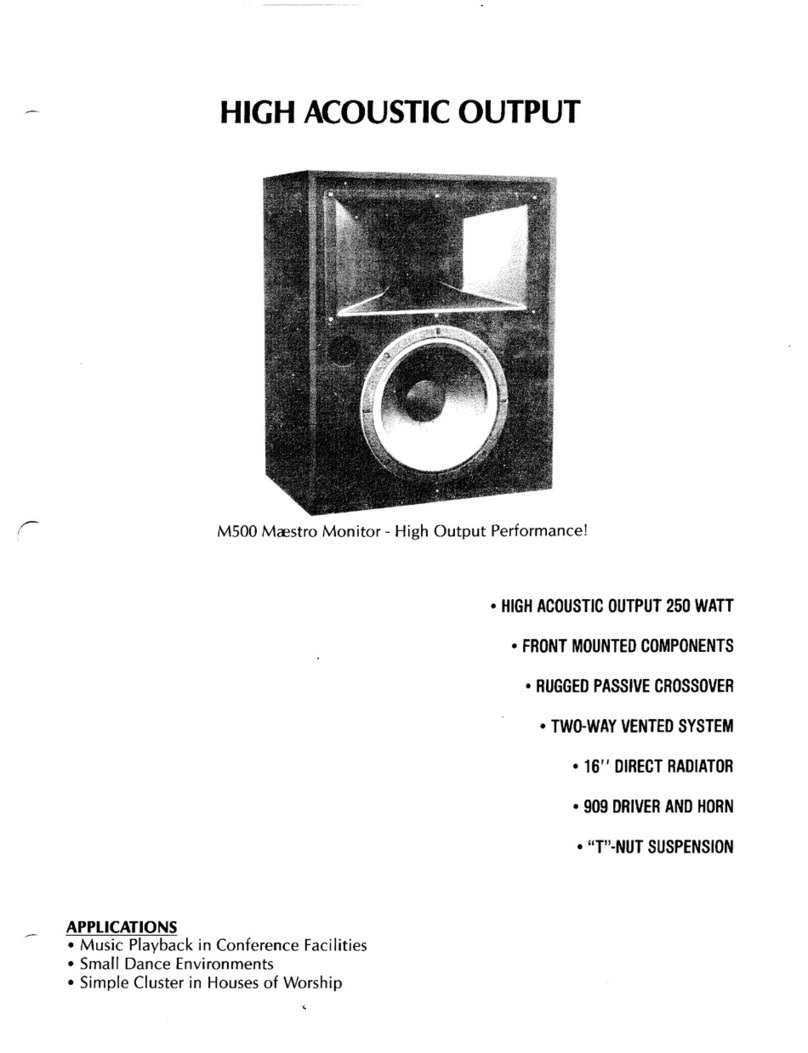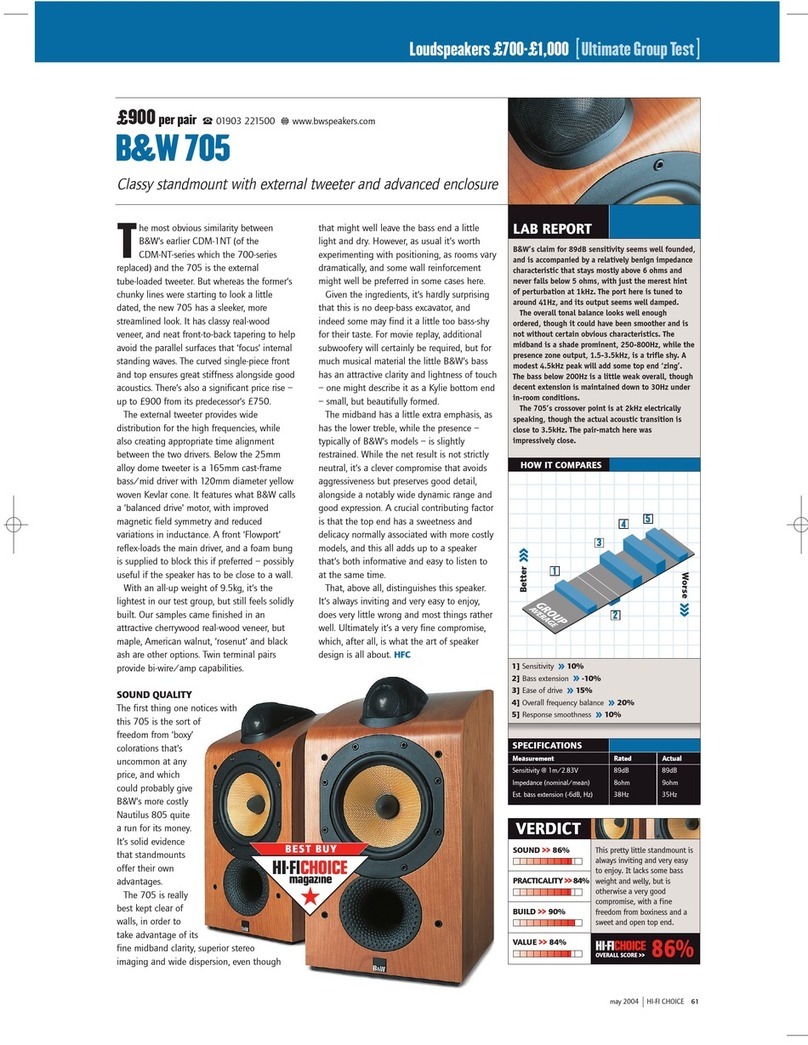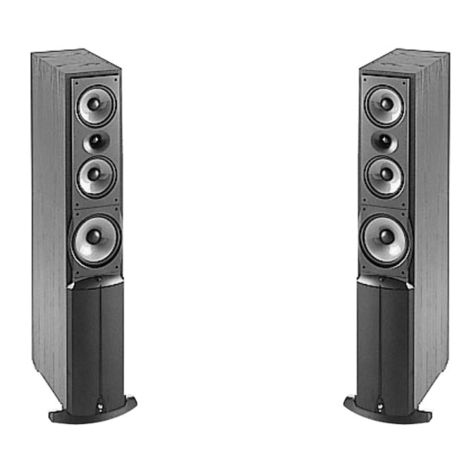Linear Power LP Series TO-3P User manual

™
F O R T H E L O V E O F M U S I C
MODEL LP2075©
LP Series TO-3P
INSTALLATION AND
OPERATION MANUAL
INTRODUCTION
Congratulations. With so much lower-quality car audio equipment currently on the market, you
have found one of the highest-grade, All American-made amplifiers produced today. Since 1975
we have manufactured the very best audio equipment for your car. Yes, we are American
owned, designed, engineered and built in the USA, and we are proud of it! All LP Series©
amplifiers, also have a 4-year warranty** to assure your investment in a LINEAR POWER™
product was a wise choice. Our products are simple, yet flexible, and we are concerned about
giving you the absolute best sound quality and reliability possible. As you would expect, you will,
in the near future, see other new ideas and innovative products ranging from more amplifiers,
crossovers and preamps, from one of the industry’s oldest and most-respected amplifier
companies.
TECHNICAL DISCRIPTION
POWER SUPPLY: Our mosfet-driven converter utilizes some of the highest current fets on the
market today as switching transistors. These transistors are protected by a unique non-interactive
over-current protection that does not regulate the power supply until maximum current is
achieved, unlike other manufacturers’ designs that fully regulate the power supply and, thus, limit
headroom and dynamic response. The power supply is extremely over built, with the transformer
capable of delivering more than 5 times the energy needed to run the output stage at rated
power. The power supply is also highly efficient, with the efficiency levels above 90 percent.
OUTPUT STAGES: Transformer-less, direct coupled and fully complimentary, output transistors
are high current and low distortion and are the highest-sound-quality devices currently offered
from On Semiconductor (Motorola). These TO-3P devices are operating at a fraction of their
limitations and utilize the same style internal electronics as our old amps did, using the TO-3
Metal-cased transistors but just with a newer and better SQ part number. In 4-ohm stereo, the
output devices in the LP2075© work at approximately 15% of their design capabilities as
engineered by Motorola. Power is supplied to the outputs thru heavy-gauge, solid copper buss
bars, and the power is triple filtered at three separate locations to ensure the lowest noise and
distortion from the amplifier as well as the highest slew rate and transient response by having the
last filter and storage stage directly at the bank of output devices. Linear Power™ products are
designed for serious sound quality, extremely over built and made to last!
**4-year warranty on all amplifiers that are dealer purchased and dealer installed; 1-year
warranty on all over-the-counter and Internet sales.
1

PROTECTION: Since the LP2075© is capable of enormous amounts of output power, it is
protected very well. Protections include: reverse polarity, short circuit and low impedance load
conditions, as well as, over-current protection of the power supply. The amplifier also monitors
battery voltage, and the Green “ON” LED will flash when the battery voltage drops dangerously
low. The amp will shut down if voltage drops below 8.5 volts. It is also protected against high
ambient temperatures by a two stage thermal protection. At 60 degrees C, the amp turns the fan
output circuit on, providing up to 10 amps of current to drive almost any custom fan array you
could conceive. Or you can just plug our optional low-noise floor fan shroud into the connector
provided. At 80 degrees C, the amplifier will shut itself off from a few seconds up to a 3-minute
period to cool to within a normal operating temperature range. It will then cycle itself back on.
OPTIONAL FAN CIRCUIT: As noted above in the paragraph on protection, the LP2075©, as well
as all of our new models of amplifiers, are equipped with a fan circuit. In most cases you will not
need the use of the fan circuit or the optional fan shroud. It has been added for the occasion of
installing the amplifier in small spaces with minimal air flow or high ambient temperature. The fan
connector is located on the rear butt plate centered between and to the bottom of the right pair of
output binding posts. Our optional fan shroud plugs into this two-pin mini-Molex connector. If you
will be using this connector with your own custom cooling system, the pin toward the pointed end
of the Molex connector is the 12 volt positive output connection. This circuit and connector can
support up to 10 amps of current to run most any custom fan system. The fan circuit switches
ground not 12 volts to the fan system. You can use the 12 volts provided in the connector or use
your on 12 volt source and use the ground in the fan connector to switch ground to your fan
system. The fan circuit is also reverse polarity protected, so daisy chaining multiple amps into one
custom fan system is possible, with any one of the amps being able to trigger the fan system
when needed without damaging the other amplifier fan circuits.
STATUS LEDS: On the face of the amp are three status LEDS that indicate the amplifier’s
condition.
1. GREEN LED is indication that the power supply is on and operational and providing power
to the output stages. The GREEN LED will also flash when battery voltage goes below
acceptable limits. If the GREEN LED flashes, all wiring, connections and power source should be
checked for issues that might cause a low voltage condition. The amp will shut down if voltage
goes below 8.5 volts.
2. YELLOW LED indicates that the amplifier is in a high temperature condition and has turned
itself off for a short period to cool. The amp will auto-reset and turn back on without the stereo
being restarted.
3. RED LED indicates that the amp is in one of its protection modes. The amp should be shut
off and checked for issues that would trigger these protection modes, such as a shorted speaker
wire or binding post connection, a lower speaker impedance load than recommended, or a
damaged speaker voice coil.
CONSTRUCTION: Features: Double sided MIL SPEC heavyweight glass epoxy circuit board with
3 oz. copper plating, and all high current paths are backed up further with solid copper buss bars.
High quality, low ESR (Effective Series Resistance), high temperature, and high voltage filter
capacitors for lower power supply losses. Audio-grade capacitors in output and pre-amp stages
with bypass filtering on all electrolytic caps. Heat sinks were custom designed in house. Based on
our old designs we have improved the heat sinks to work even better than before. These new
heat sinks have more surface area than our old sinks but are physically smaller.
2

QUALITY CONTROL: In-house construction of critical components like transformer and chassis,
as well as total assembly, allows LINEAR POWER™ to maintain uniform quality. 100% of the
finished units are tested then burned in for four hours and tested again. Amplifiers that pass this
rigorous test have truly earned the LINEAR POWER™ logo. All LINEAR POWER™ amplifiers
are designed and hand assembled in house and built totally in the USA.
MOUNTING
1. The amplifier will work best if it is kept as cool as possible. Mount in a position that would allow
the circulation of air. Mounting the amplifier so that the heat sink fins are vertical provides
convection air flow and provides the best cooling option. If mounting the amp horizontally, you
should provide a minimum of 2 inches of overhead clearance above the amplifier for heat to rise
from the heat sink. If using the optional fan shroud, be sure not to block the intake side of the fan
and also allow the exhaust side to blow freely into an open area.
2. Wire all connections as shown in instructions. If using the optional fan shroud or your own fan
system, connect fan power plug to the amp. Place fan shroud into position over amplifier and
mount securely.
3. When mounting the amplifier DO NOT allow the case (heat sink) of the amplifier to come in
contact with any other metal or chassis ground of the vehicle. Doing so can result in system noise
resulting from a ground loop created from the secondary ground connection between the case of
the amp and the body of the car. Use the amp’s mounting holes and the installed rubber
grommets to mount the amplifier securely and insulate it from other metal and ground. If any of
the grommets are ever damaged, replace them with new grommets. Installing the amplifier on an
amp board or in an amp rack to further isolate it from the vehicle is recommended.
WIRING
1. Disconnect the negative ground cable from your vehicle's battery before making any power
connections and/or pull MAIN power fuse at battery for audio system. DO NOT reconnect main
system power fuse and/or ground cable until installation is complete!
2. DO NOT connect RCA inputs to amp until all other wiring is finished. This will protect
radio RCA grounds from damage from 12 volts possibly shorting to case of amp and thru to RCA
cable grounds and into head unit! DO NOT disconnect or re-connect RCA cables when amp
is on. (See RCA GROUND section on page 4)
3. Connect the negative ground wire from the amp to a solid frame member via bolt or self-
tapping screw. This connection must be to a clean, unpainted surface. Always attach the ground
wire first when installing this amplifier and disconnect the ground last when removing this amp
from the system. Ground cables must be of the same size as power since DC is a loop condition
and the same amount of current is passed thru the ground as is the power.
4. Fuses of the proper size (1 x 20 ATC) must be installed internal of the amp to protect the
vehicle's electrical system and the amplifier from damage. There should be a master system fuse
installed within 18 inches of the car battery to protect the battery and power cable in case there is
a wiring short between the battery and the amplifier(s). This master fuse should be connected to
the battery's positive terminal and should be of a large enough size to provide needed current to
all amplifiers without limiting current to the system. (i.e., the fuse should be larger than 40 amps.)
The power connection block on the end of the amplifier will accept up to 4 gauge cable, a
minimum of 6 gauge power and ground is recommended.
WARNING: USE OF OVERSIZE FUSES INTERNALLY WILL VOID THE WARRANTY
3

AMPLIFIER TURN ON MODES
Turning your amplifier on can be accomplished in one of two ways by selecting the desired
position on an internal switch. This switch is located in the power supply section over to the side
of the amp away from the transformer. Traditional 12 volt remote from the radio, other source
unit or processor can be selected by setting the internal switch to the position marked “REM”.
Your amp already comes set to this mode from the factory and uses normal 12 volt remote turn
on. For DC SENSE (audio sense) the switch will be set to the position marked “DC SEN”, this
allows the amplifier to be used with any source unit not having a direct 12 volt remote output lead
(OEM head units). In DC SENSE or “audio sense” mode the normal 12 volt remote input
terminal on the power block of the amplifier becomes a 12 volt remote OUTPUT terminal
capable of turning on other pieces of audio equipment in the system. The RCA Input Mode will
have to also be properly selected to the “DIFF/BAL” mode, when using the “DC SEN” turn on
option; see next paragraph.
RCA GROUNDS
DO NOT remove or install RCA cables from or into the amplifier with the amplifier on! This
may cause a loud pop or squeal which can damage the speakers or your hearing. It may also
blow one or both of the RCA ground micro-fuses located on each input channel on the circuit
board of the amplifier. These fuses are there to protect the ground to each channel of the
amplifier from external issues. These fuses are NOT user/dealer replaceable and must be
installed by a qualified technician or factory re-installed if they are ever blown.
Our Linear Power “LP” Series amplifiers have input and output grounds that are isolated from
the chassis ground (main power ground) of the power supply of the amplifier. Unlike most other
current amplifier designs, we do this to reduce chances of a ground loop and to reduce induced
noise thru the power supply ground plane. Keeping the audio ground plane and the power supply
ground plane separate greatly reduces the chance for additional noises to enter the audio path.
Removing or installing the RCA cables while the amp is on and functioning disconnects all ground
to the pre-amp and output stages, also running the amplifier with no RCA cables connected can
cause the amplifier to pick up RF (radio frequency) noise due to the wide bandwidth of the
amplifier. This can cause a hiss/noise thru the speakers and/or cause the amplifier to idle
excessively warm and pull extra current. If you are running the system to isolate or troubleshoot
noises and need to disconnect the RCA cables from the amplifier(s) during testing, install a
dummy load on each channel, consisting of a pair of RCA connectors with a 10K ohm 1/8 or ¼ W
resistor between the center pin and the shell (ground) of each connector. This will give the
amplifier a “closed loop” and will stop any external noise from entering the audio path of the amp
thru the RCA inputs. Do these procedures prior to turning the amplifier on and disconnect dummy
loads only after turning the amplifier off, then reconnect the RCA cables again for normal use,
before turning it back on.
Testing to see if micro-fuses for each channel are still functional and the amp still has audio
ground continuity can be performed by taking a DMM (digital multi-meter) set to continuity test
(beep) or to ohms. With RCA cables DISCONNECTED and amp OFF, test from left RCA
ground shield on end of amplifier to left negative speaker output 5 way binding post (far left
speaker terminal). Test from right RCA ground shield on end of amplifier to the right positive
speaker output 5 way binding post (far right speaker terminal), right channel is inverted, it is
actually speaker negative! The meter should beep or the ohm meter scale should read a very low
resistance (below 1or 2 ohms). If there is no beep or if the ohm meter scale reads a very high
resistance or no resistance at all (open circuit) the fuse has been blown. The amp will have to be
serviced and the micro-board fuses replaced. These 4 amp fuses will not fail unless an external
issue has occurred and the amplifier needs to protect the input grounds; such as foreign voltage
on RCA cable ground or from spikes from installing or removing the cables when amp is on.
4

USING WITH EQ’S, CROSSOVERS, PROCESSORS OR LINE LEVEL CONVERTORS
Most accessory electronics today come with a ground switchable option for “Isolated Ground”,
“200 Ohms to Ground” or “Ground” (pass thru ground) on the RCA outputs of the accessory.
These units come set primarily to “Isolated Ground” for use with amplifiers and equipment with
common ground to chassis ground through the power supply section of the amplifier. Our
amplifiers use a floating ground pre-amp and output stage and have no connection to the amps
power supply ground which could cause noise. In this case, our amplifiers need to see ground
on the RCA cables when the amp is used in single ended mode. We ship all our amps in single
ended input mode, with this being the recommended input mode unless you are using the amp
with a high level output radio, then follow the instructions in the next section. Please be sure the
accessory electronics RCA output is selected for “Ground” and not for “Isolation” or “200
Ohms to Ground”. If our amplifiers are used with “Isolated Ground” or “200 ohms to Ground”
there can be noises generated since the amplifier section has no ground reference.
RCA INPUT MODE SELECTION
As shipped from the factory your amplifier is set for Single Ended RCA input, which in most
cases will be what you will need. If you are going to use the amplifier with an “OEM” factory head
unit and will need the amplifier to turn on by DC SENSE “audio sense mode”(see above), un-
screw the bottom cover and slide it back. Located on the circuit board near the left and right side
of the input sensitivity (gain) control, are two sets of push-pin connectors, one set of 3 pins for left
channel and one set of 3 pins for right channel. To set the amplifier for Differential Input mode,
remove the shorting connector from across the two pins marked “SE” and move them across the
two pins marked “DIFF/BAL”. In the case of noise, experimenting with changing the two input
modes may help reduce system noise.
USING AMP WITH “OEM” FACTORY RADIO
The new line of Linear Power “LP” Series amplifiers can be used with an “OEM” factory radio
without the use of a line level converter. Removing the line level converter from the signal path
improves the sound quality of the factory head unit significantly, simplifies the installation and
saves money. Most of the amplifiers on the market cannot do this! The pre-amp section in our
amplifiers can take up to a 15 volt peak input from the head unit or around 10 volts RMS
maximum. Start your install by setting the input gain on the amplifier to the minimum setting, then
the speaker output leads from the radio can be wired directly into the RCA inputs of the amplifier
using a section of RCA cable. The left speaker positive will wire to the signal or center pin of an
RCA jack and the left speaker negative output will wire directly to the RCA ground shield of the
cable for the left channel, repeat the operation for the right channel. Once you have the speaker
leads connected to an RCA cable, connect the RCA cable to the amplifier like you would normally
install a low level set of RCAs to the amplifier. The amplifier must be in DIFFERENTIAL INPUT
MODE, and the REMOTE SELECTION SWITCH must be set properly. See the two paragraphs
directly above detailing these operations.
5

TRI-MODE/STEREO/MONO OPERATION
All Linear Power “LP” series amplifiers are capable of running TRI-MODE, or what is also
known as MIXED MONO OPERATION. This means that the amplifiers can play a simultaneous
stereo and mono mode at the same time. This can be accomplished by running a 4 ohm stereo
load and an 8 ohm bridged load with the power supply tap settings, set to the taps marked 2
ohm. This arrangement presents the same load to the amp as a 2 ohm stereo load.ONLY the
impedances given above should be used, combining lower impedance loads will result in the amp
switching into protection mode or possible damage to amplifier.
Note, that running the amplifier in this configuration would require a passive inductor to be placed
on the bridged woofer to illuminate high frequency to the sub. These inductors are quiet large and
would have to be constructed from heavy enough gauge wire to handle the output capability of
the amplifier used.
Electrically the inductor will cause a phase shift in the subwoofer from the rest of the system, as
well as, absorb a percentage of power of the amplifier going to the subwoofer. It will also lower
the channel separation between the two channels since it has electrically strapped the two
channels together. Even though our amps are capable of this operation, it is discouraged from
doing so because of the above negative effects. These negative characteristics are inherent to
any model or brand of stereo amp capable of running this mode. It is understandable that one
would attempt this operation as a cost savings measure to have one amp run the entire system.
OPTIONAL CROSSOVER CARD
An optional FACTORY INSTALLED crossover card is available for the LP2075©. The crossover
plugs into the main board via a header connector. The crossover is available for those situations
in which there is no external crossover capability, such as in factory “OEM” head units. The
crossover option can be ordered with the amp as a production option, or the amplifier returned
after original purchase to be added to the circuit at a later date. This is a high-quality crossover
using high-grade parts, including sound quality op amps and processors. The crossover uses two
infinitely variable crossover potentiometers to set the crossover points exactly where you want
them. The low- pass filter network uses a Butterworth alignment and the high-pass circuitry uses
a Bessel crossover filter. There is a three-way crossover switch to choose between high pass,
bypass or low pass operation. The upper limit frequency range for low pass operation will be
from 30 Hz up to 3 KHz and the lower limit range for high pass operation will be from 3 KHz
down to 30 Hz. The crossover is handled as a separate factory installed option, this is done so
it is not in the normal musical path in every amplifier, for the musical purist who does not want a
crossover in the audio path or who already have crossover capabilities with a head unit or
outboard processor.
FOUR-OHM CAPABILITY
As shipped from the factory, the LP2075© will be set up to run a 4-ohm stereo or 8-ohm mono
load. To correctly run a 2-ohm stereo or 4-ohm mono load, remove the cover and change the
power supply taps to the 2-ohm taps (2-ohm stereo or 4-ohm bridged) located on the board next
to the 4-ohm taps (4-ohm stereo or 8-ohm bridged). There are NO power increases for running
the lower loads when the proper power supply taps are used; this is done for convenience if you
already have a 2-ohm stereo or 4-ohm mono speaker arrangement. Running the amplifier with
improper speaker loads in the wrong power supply taps may cause the protection circuits to
activate, and using the amplifier incorrectly is not recommended and will void the warranty. This
IS NOT a high-current amplifier, it is a high-voltage amplifier that does not have to be used in a
low impedance load to make power.
6

SPEAKER OUTPUT
The speaker output connectors on the LP2075© are two pairs of 5-way binding posts. Attach a
lead from the positive terminal of the speaker to the left speaker positive terminal of the amplifier,
and the negative speaker terminal to the left negative terminal of the amp, repeat for the right
channel. The 5-way binding posts should have a red color band for positive and a black color
band for negative. The speaker terminal, with the terminals facing you, fins up, from left to right, is
as follows:
Left speaker (-), Left speaker (+), Right speaker (-), Right speaker (+)
For Bridging the Left (+) and the Right (-) are used. All the terminals are also marked on the end
of the amplifier.
GAIN ADJUSTMENT
In a basic system, using a single amplifier, set the amp to minimum, turn the deck up until it just
starts to distort, then back the deck down slightly. This is the point where the output of the deck is
cleanest. Now, bring the gain of the amp up until it just starts to distort, and back it down slightly.
This will allow the deck and amp to reach maximum useable output at the same time.
WARNING
Your new LINEAR POWER™ amplifier, when used in conjunction with many of the efficient
speaker systems on the market today, can produce sound pressure levels that are considered
harmful to your hearing. Exposure to loud music may lead to loss in hearing. This effect may not
be readily appreciated because the damage to hearing is progressive.
Those who are exposed to excessive sound pressure should utilize direct individual protection in
the form of earplugs or earmuffs specifically designed for noise reduction.
In accordance with the OSHA (Occupational Safety and Health Act) regulations for noise levels
as they relate to the work area, excessive sound pressure is defined as 115 db (a) continuous for
any length of time.
We recommend that you exercise restraint while enjoying the performance of this and other high-
powered mobile audio equipment.
GENERAL TROUBLESHOOTING
NO SOUND: Check all connections. Check main power fuses. Check internal fuse(s). Check LED
status indicators, is the Green LED lit? Are any of the other LED indicators lit? With a trouble light
or DVM meter, be sure +12V is present at the amplifier on the large positive cable and on the
small red/white turn-on wire. Check for a good ground connection. Check by substitution or other
method for proper operation of music source. Be sure the Turn on Switch mode is in correct
position.
BLOWS FUSES: Check all connections to be sure all power wires, ground wires and speaker
wires do not short to each other or ground to vehicle. Re-check polarity of main power wires.
Check for proper speaker impedance. Check for proper sized fuse(s) DO NOT install oversized
internal fuse(s)!
7

SHUTS OFF: Check the GREEN LED to see if it is lit. If the GREEN LED is off check for power,
ground and remote turn on to amp. Also check the internal fuse(s). This amplifier is equipped with
a thermal shutdown system; in the unlikely event of excessive temperatures due to high ambient
or operating temperatures the YELLOW LED (Thermal) will light and the amp will shut down for a
short period. The thermal circuit will auto reset, cycling the amplifier off and on is not needed to
re-start amp. The amp also has a short circuit and over current protection system. Improper
speaker impedance, wiring shorts or damaged speakers may cause the RED LED (Protection) to
trigger shutting the amp down until the problem is corrected and the amp restarted. The amplifier
will actually have to be shut down and restarted to unlock the Protection circuit. Check all the
Status LEDS to help diagnose the situation. To avoid damage to the speakers, turn the volume to
a minimum while waiting for the amp to turn itself back on.
NOISE SUPPRESSION
The vehicle's battery forms a huge capacitor bank that does a fantastic job of filtering noise.
Unfortunately, batteries grow old and lose their ability to hold a charge. At the same time, they
lose their ability to filter noise; even corrosion on the battery terminals will cause increased noise
as it isolates the battery.
If the vehicle is in need of ignition repair or tune up, increased noise will result. Specifically, on
older model vehicles, check the condition of points and condenser, as well as the spark plug
leads. Don't forget to check for resistor plugs too.
TROUBLESHOOTING NOISE
Once the type of noise has been determined, the entry method must be isolated. The easiest
place to start is the amplifier. Unplug the RCA jacks with the amplifier off and install RCA
dummy loads (see RCA GROUND section on page 4). After turning amp back on, listen for a
change in the noise level. If little or no change occurs, the amplifier's input power source
(battery/alternator) is contaminated or you have bad chassis ground connections to amplifier. If
the noise is gone, the possibilities are: a ground loop between the radio and some other piece of
equipment inline or between the amplifier(s), no RCA ground getting to amp, or a noise problem
earlier in the system. If the problem is a ground loop, the best solution is to check grounding on
all equipment inline and/or a better ground for the amp(s). If one side of the speaker wires has
made partial or full contact to the metal of the vehicle or speaker frame, this also will cause a
ground loop, and might also cause a squeal thru the speaker or system. It can also back-feed and
cause the amplifier to run warmer than usual or possibly go into protection.
The next check is for radiated noise. With the deck still electrically connected to the vehicle,
slowly remove it from its installation, and listen for a change in noise level. Any reduction would
indicate that noise was being radiated directly into the deck while it was in the dash. If you are
dealing with radiated noise, the only solution is isolation. The easiest method is usually to move
the contaminated wiring away from the stereo's wiring.
The best way to eliminate power line noise is to install a filter capacitor across the noise source.
The best capacitors to use are .5mfd 25v bypass capacitors for the coil, as well as any accessory
In vehicles today there are all types of advanced electronics built into the vehicle or added to the
vehicle by the owner that can cause interference. It is even more important to pay attention to
where you run your wiring and signal cables so they do not pick up noise from these other
electronics. It is important to use any noise inductors that an aftermarket radio manufacturer may
provide for USB, iPod, iPhone or other cables on their radios. These cables act as antennas and
can cause noise to enter the stereo system. The line inductors that some radio manufacturers
8

provide will stop or reduce unwanted noise from entering these cables. Keeping these cables
from the RCA audio cables for the stereo system is also a very good idea. CAN-bus systems in
today’s automobiles can be extremely noisy, stay away from the vehicle wiring as much as
possible, even with speaker leads and passive crossovers. High frequency energy can bleed into
the audio system.
SERVICE OR REPAIR
To obtain service or repair, please go to www.linearpower.com. There you will find a service
page that you can download and print a RA Form from. This form will have all the information you
need to send the unit in for repair and areas for you to enter all your information. If you are
sending a product in for warranty, you must also send proof of purchase from an authorized
dealer of direct purchase receipt from the factory. You can also contact our authorized LINEAR
POWER™ Product Service Center:
T.I.P.S. INC.
241 South Poplar St. D'Lo MS 39062
(601) 675-7134
E-mail: ray@tipsinc.net
3 4 5 5 L A N E L L L A N E, P E A R L, M S 3 9 2 0 8 (6 0 1) 9 3 2 – 8 4 7 7
9

10
This manual suits for next models
1
Table of contents


